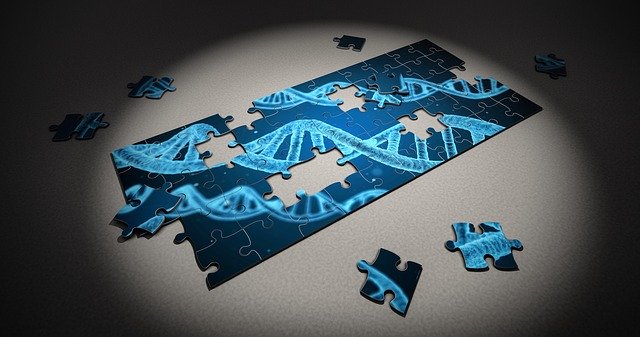Genetic modification is the medical advancement, which requires mitochondrial replacement. Women who act as a carrier of mitochondrial diseases and have the risk to transmit the disease to their children need mitochondrial replacement treatment to avoid this transmission. It is necessary to mention that the outcome of mitochondrial diseases ranged from mild to fatal condition.
Yet now, no medical intervention discover for complete curing of this disease and only a few medicines are available to treat the symptoms. However, medical advancement provides the option of mitochondrial replacement, in which DNA is collected from three people for the correction of an inherited genetic mutation. In 2016, the first baby was born by using this method. In medical history, this is considered as a success story of mitochondrial replacement therapy.
Mitochondrial replacement therapy yet now not regulated in many countries except the United Kingdom. Some countries allow mitochondrial replacement therapy, others do not, which is similar to assisted reproductive techniques. Therefore, people travel to the countries where mitochondrial replacement technology is allowed to avail of this new reproductive technology.
Thus, country-wise uneven regulation of mitochondrial replacement technology promotes “medical tourism”. People travel from their home countries to places where mitochondrial replacement therapy is authorized. But the absence of regulations raises several ethical and legal questions including safety and risks of the technique, though people are starting to use this technology.
What is the mechanism of action of Mitochondrial replacement?
Mitochondria, which is also known as the powerhouse of a cell as it supplies energy to cells for performing their lively functioning and its DNA content are inherited materials transmit from mothers to their fetus. In some cases, defective mitochondrial DNA responsible for erroneous mutations which leads to mitochondrial diseases.
The scope of transmitting mitochondrial diseases from mother to fetus is high. Leigh Syndrome is a type of mitochondrial disease, which causes neurological disorders. The outcome of this disease is fatal for the born child.
The Mitochondrial replacement is a laboratory-based therapy and an extended procedure of in-vitro fertilization. The basic fundamental of this process is to replace or substitute the defective mitochondria of the mother’s egg with healthy mitochondria obtained from a donor. Therefore, the child has a genetic relation with mother, but obtain mitochondrial DNA from the donor.
Three germ cells, one obtained from the mother’s egg, another obtain from a healthy donor’s egg and the third one is obtained from the father’s sperm cell to develop the chromosomal structure of the child born through mitochondrial replacement therapy. The involvement of ‘three-parents’ often creates controversy.
The tiny fraction of DNA replacement obtain from a donor in case of mitochondrial replacement therapy does not significantly alter the genetic characteristic of the born child. Therefore, clinically, the donor is not considered as a “second mother” of the child born through the mitochondrial replacement process.
Impact of mitochondrial replacement on Fertility Tourism
Currently, no uniform standard guideline has made, which can be followed globally. Therefore, couples and experts, who willing to use mitochondrial replacement therapy are traveling to the countries where this is no restriction on this procedure. However, some countries including the UK have banned this technology because of genetic modification conducted in the mitochondrial replacement therapy believe to transfer in the next generation. However, many countries including Japan, India have unclear regulations germline modification.
The trend of international fertility tourism is increasing due to many couples seek assisted reproductive technologies due to restricted laws and regulation, unavailability, expensive treatment package in their home countries, which is similar to other assisted reproductive technologies including commercial surrogacy, embryo selection, etc.
In Mexico, a team of U.S. physicians first successfully introduce mitochondrial replacement to a Jordanian couple, which was the first documented case. Then, this method was conducted in Ukraine and China.
Presently, global regulatory authorities are debating for better regulation of the genetic modification technologies, including mitochondrial replacement therapy. Governments not only consider the ethical and safety issue of the genetic modification technologies but also consider their effect on medical tourism.
The fact of mitochondrial replacement therapy
Mitochondrial replacement is considered as “germ-line modification,” which modifies genetic structure which passes on to the next generation. But the fact is that the germline change occurs through the mitochondrial replacement process can only inherit in the case of the female child. This indicates the born female child at her maternal status can pass the donor’s mitochondrial DNA to her offspring, which will continue with her female descendants, who pass on to their children. However, in the case of a male child, the transmission of mitochondrial DNA on to his offspring is not possible. Recently, the U.S. National Academies of Science has suggested that to apply the mitochondrial modification only to male embryo avoid the controversy related to inherited genetic modification.
References:
https://www.ncbi.nlm.nih.gov/

Ravi Sharma is a self-motivated, successful entrepreneur and has a solid experience in the fertility segment. and he is the director at ARTbaby Global (ARThealthcare). He is a pharmacy graduate with post-graduation in business administration and has 14 years of rich experience in the field of infertility segment. He loves to write about IVF, Surrogacy, and other ART (assisted reproductive technology) news, issues, and updates. He is a Pharmacy graduate (B. Pharm) and M.B.A (marketing).
His most recent success includes the successful launch of the medical tourism company, ARTbaby, which offers treatment options for infertility, egg donation, and surrogacy. He likes spending time with his family and writing about various aspects of IVF surrogacy and donating eggs.

